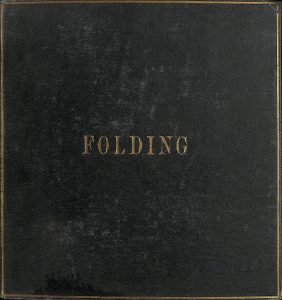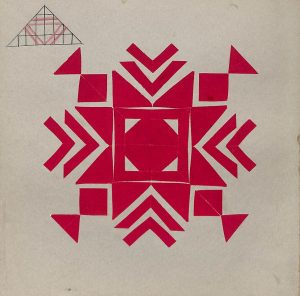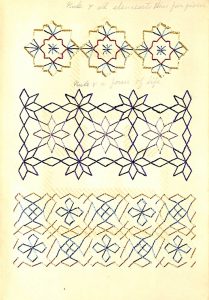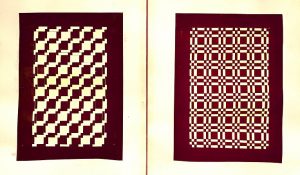 Kindergarten used to look very different a century ago. It follows that training to become a kindergarten teacher was also quite different! This month’s historical display looks at some of the albums of work that student kindergarten teachers produced during their training.
Kindergarten used to look very different a century ago. It follows that training to become a kindergarten teacher was also quite different! This month’s historical display looks at some of the albums of work that student kindergarten teachers produced during their training.
One way of thinking about kindergarten education was developed and promoted by a German educator named Friedrich Froebel (1782-1852). Froebel emphasized play in early childhood and believed that children were naturally creative and productive beings.

A page of student work from a book titled Cutting, created by Alma Harvey as a student kindergarten teacher in 1909.
Froebel’s approach to early childhood education consisted of two parts: “Gifts,” which consisted of 10 types of wooden objects for children to interact and play with, and “Occupations,” which were activities designed to develop a child’s skill and creativity. These Occupations included perforating, sewing, drawing, weaving, paper cutting, and paper folding. The Gifts and Occupations were to be presented to children in sequence, gradually building on one another. Froebel believed that this would ground children in the world around them and provide them with a solid foundation for later schooling.

A page of student work from a book titled Sewing, created by Florence M. Funnel as a student kindergarten teacher in the late 1890s.
Froebel’s method of early childhood education was introduced to Ontario schools in the late 1800s. By the early 1900s, Froebel’s method was formally part of the kindergarten curriculum. Children aged 4-7 were presented with Gifts and the Occupations, including sewing, drawing, folding, cutting, and weaving. Froebel’s Gifts and Occupations remained a distinct part of the kindergarten classroom into the 1930s.
Kindergarten teachers in Ontario were required to hold a Kindergarten-Primary Certificate, for which they received training at a Normal School. Student teachers in this program took courses in subjects such as the history of education and school organization and management. They were also required to study Kindergarten Subjects, which included Froebel’s Gifts and Occupations. Part of the Froebelian training involved producing albums containing examples of the various Occupations. New kindergarten teachers could then draw upon these examples for projects and activities in the classroom.

Two pages of student work from a book titled Weaving, created by Florence M. Funnel as a student kindergarten teacher in the late 1890s.
The Ontario Historical Education Collection at the OISE Library has an impressive collection of these remarkable Froebelian kindergarten books. The collection was established by Dr. Barbara Corbett when she donated research materials relating to her dissertation on the history of Froebelian education in Ontario. In addition to the books of Froebel’s Occupations, the Historical Collection includes textbooks about and by Froebel as well as lecture notes produced by kindergarten teachers during their training.
These books will be on display in the glass table on the ground floor of the OISE Library through the month of October.
